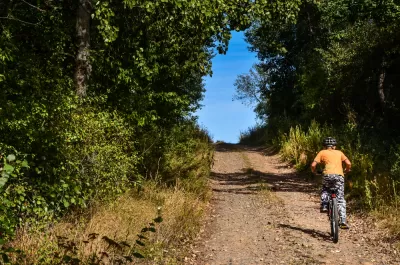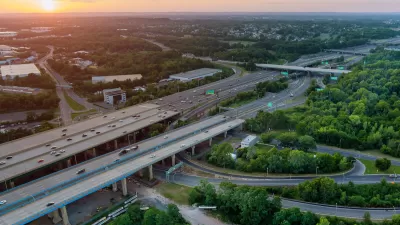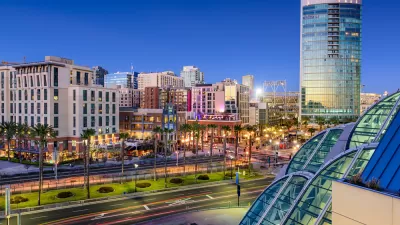FHA research shows that multi-use trail users contribute three times as much in gas taxes as the program to build and maintain them receives.

"According to a long-delayed new fuel study from the Federal Highway Administration, users of snowmobiles, all-terrain vehicles, and other off-road automobiles pay an estimated $281 million into the Highway Trust Fund via gas taxes every year," which, as Kea Wilson reports, amounts to "three times more federal revenue than is spent building the trails themselves."
Yet the Recreational Trails Program, which funds the maintenance of these trails, is slated to receive just $84 million a year under the FAST Act–"not nearly enough money to maintain, much less expand, the vast network of urban greenways and critical rural transportation connections which the program funds."
Contrary to what the name might suggest, the Recreational Trails Program is a versatile initiative responsible for funding many key transportation arteries for non-drivers, including segments of the Empire State Trail that run through New York City; about 30 percent of program funding is specifically allocated towards non-motorized transport, with a further 40 percent devoted to mixed-use paths.
The FHA study could help convince lawmakers that the program deserves more funding. "With proof in hand that the trails community is already more than pulling its own weight, advocates say that $250 million a year isn’t too much to ask for — and it’s only a start."
FULL STORY: REPORT: Federal Recreational Trails Program Underfunded by $200M+ Per Year

Planetizen Federal Action Tracker
A weekly monitor of how Trump’s orders and actions are impacting planners and planning in America.

Restaurant Patios Were a Pandemic Win — Why Were They so Hard to Keep?
Social distancing requirements and changes in travel patterns prompted cities to pilot new uses for street and sidewalk space. Then it got complicated.

Map: Where Senate Republicans Want to Sell Your Public Lands
For public land advocates, the Senate Republicans’ proposal to sell millions of acres of public land in the West is “the biggest fight of their careers.”

Maui's Vacation Rental Debate Turns Ugly
Verbal attacks, misinformation campaigns and fistfights plague a high-stakes debate to convert thousands of vacation rentals into long-term housing.

San Francisco Suspends Traffic Calming Amidst Record Deaths
Citing “a challenging fiscal landscape,” the city will cease the program on the heels of 42 traffic deaths, including 24 pedestrians.

California Homeless Arrests, Citations Spike After Ruling
An investigation reveals that anti-homeless actions increased up to 500% after Grants Pass v. Johnson — even in cities claiming no policy change.
Urban Design for Planners 1: Software Tools
This six-course series explores essential urban design concepts using open source software and equips planners with the tools they need to participate fully in the urban design process.
Planning for Universal Design
Learn the tools for implementing Universal Design in planning regulations.
Heyer Gruel & Associates PA
JM Goldson LLC
Custer County Colorado
City of Camden Redevelopment Agency
City of Astoria
Transportation Research & Education Center (TREC) at Portland State University
Camden Redevelopment Agency
City of Claremont
Municipality of Princeton (NJ)





























